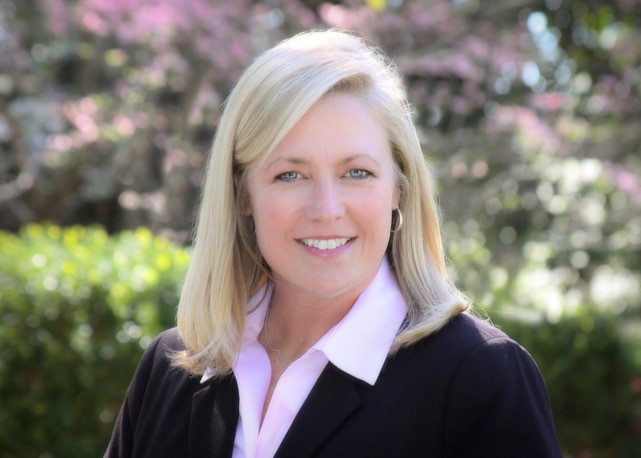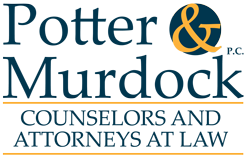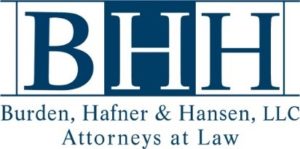Popular wearables such as the Fitbit have experienced setbacks as they sell millions of their fitness trackers to the public. These problems have ranged from skin irritation to a failure to accurately monitor the user’s heartrate. Fitbit has fended off multiple lawsuits, including a shareholder lawsuit resulting from alleged failures of their device to work as advertised, resulting in a plunge in its stock value.
In October 2013, Fitbit released its Force model and by the end of that year, users were reporting skin irritations on their wrists where they were wearing the fitness tracker.[1] The symptoms reported by users ranged from red patches to blisters.[2] Apple Watch users also reported skin irritation in the area where they were wearing their watch.[3] Several customers who alleged that they suffered from skin irritation commenced a lawsuit against Fitbit claiming to have been misled by their advertising of the device.[4] Overall, approximately 1.7% of the Fitbit Force users reported skin irritation.[5]
As a result of the consumer complaints, Fitbit issued a recall of the Force model offering a full refund.[6] Fitbit conducted the recall of the Force with the Consumer Product Safety Commission.[7] The recall was announced on February 20, 2014 and involves approximately 1,000,000 units in the United States and another 28,000 in Canada.[8]
In a letter dated October 17, 2014 from the CEO of Fitbit, James Park, Fitbit announced that after their investigation, it is believed that some users were reacting to the nickel in the stainless steel or to the methacrylate used in the adhesives to manufacture the Force.[9] Mr. Park said that their test results indicated that the affected customers were most likely experiencing contact dermatitis, a minor skin irritation.[10]
Of more significant concern, were allegations about the failure of the Fitbits and other wearables to accurately measure the user’s heartrate during vigorous exercise. In January 2016, Fitbit customers filed a class action lawsuit against the company alleging that the constant rate heart monitoring technology, which the company calls “PurePulse,” was not as accurate as advertised.[11] The lawsuit focused on the Fitbit Charge HR and Surge models.
In support of their lawsuit, the attorneys representing the Plaintiffs commissioned a study conducted by researchers at the California State Polytechnic University, Pomona.[12] The researchers compared the accuracy of the Fitbit with an electrocardiogram (ECG).[13] The study concluded that the Fitbit devices were about twenty (20) beats per minute off from the ECG.[14] Fitbit rejected the study, pointing out that the study was funded by the Plaintiffs’ attorneys, and that the Fitbit was designed and marketed as a fitness device that was not designed for scientific or medical use.[15]
There seems to be a consensus that wrist-worn heart rate monitors such as Fitbit are generally accurate when a person is at rest or sitting still, but their accuracy comes into question when the user starts to engage in more vigorous exercise.[16] The difference is in the way that the wrist-worn monitors track your heart rate. Electrocardiography and chest strap heart rate monitors measure the electrical impulses from the heart muscle. [17] By contrast, wrist-worn heart rate monitors shine an LED light through the user’s skin to measure blood flow through the capillaries. [18] The quality of the information regarding the user’s heart rate obtained by a wrist-worn monitor can be impacted by movement of the monitor, the user’s skin tone and any interference between the monitor and the skin.[19]
A review of the recommendations for use of the heart rate monitor on the Fitbit website illustrates ways to increase the accuracy of the heart rate monitor. Fitbit recommends that during workouts, the band should be secured three finger-widths above the wrist bone. [20] Fitbit also warns that the signal for the heart rate monitor could be lost during exercises that cause the wrist to be bent.[21] If the signal is lost, the user is recommended to stop for ten seconds to wait for the signal to return.[22]
Testing has shown that following the Fitbit directions on how to wear the device during vigorous exercise improved the accuracy of the heart rate monitor function. Consumer Reports did a study on the Fitbit Charge HR and Surge Models after the commencement of the class action lawsuit and concluded that when following the instructions from Fitbit, they were nearly as accurate as a chest strap heart rate monitor.[23] The test by Consumer Reports did note a problem with the Charge HR when it was worn by the female test subject and showed a heart rate of 144 and 139 beats per minute when she was at 150 beats per minute. The problem was resolved when they moved the Fitbit up the tester’s arm.[24]
At this point, there have been no reported injuries related to the alleged failure of the wrist-worn heart rate monitors as claimed in these lawsuits. Because the wearable fitness trackers such as the Fitbit are not medical devices, they are not regulated by the Food and Drug Administration.[25] The pending lawsuits are claiming fraud for allegedly failing to perform as advertised and do not make any claims for physical injuries.
Wearable sales are expected to grow by 20% each year over the next five years.[26] Competition is fierce with pure fitness trackers, such as those sold by Fitbit, losing ground to broader platforms (that include fitness tracking) such as the Apple Watch.[27] With wearables becoming more complex and containing more functions, including fitness tracking, we expect that product liability lawsuits from customers will increase in the coming years.
[1] Katherine Rosman, “Fitbit Now Faces Class-Action Suit in Rash Fallout,” Wall Street Journal (March 19, 2014), available at: https://blogs.wsj.com/digits/2014/03/19/fitbit-now-faces-a-class-action-suit-in-rash-fallout/
[2] Id.
[3] Aimee Picchi, “Why Apple Watch is rubbing some users the wrong way”, CBS Money Watch (May 6, 2015), available at: https://www.cbsnews.com/news/why-apple-watch-is-rubbing-some-users-the-wrong-way/
[4] Katherine Rosman, “Fitbit Now Faces Class-Action Suit in Rash Fallout,” Wall Street Journal (March 19, 2014), available at: https://blogs.wsj.com/digits/2014/03/19/fitbit-now-faces-a-class-action-suit-in-rash-fallout/
[5] Heather Kelly, “Fitbit recalls activity tracker due to skin rashes,” CNN.com (February 24, 2014), available at: https://www.cnn.com/2014/02/21/tech/gaming-gadgets/fitbit-force-recall/index.html
[6] Id.; see also: https://www.cpsc.gov/Recalls/2014/Fitbit-Recalls-Force-Activity-Tracking-Wristband/
[7] Katherine Rosman, “Fitbit Now Faces Class-Action Suit in Rash Fallout,” Wall Street Journal (March 19, 2014), available at: https://blogs.wsj.com/digits/2014/03/19/fitbit-now-faces-a-class-action-suit-in-rash-fallout/
[8] “Fitbit Recall Force Activity-Tracking Wristband Due to Risk of Skin Irritation,” U.S. Consumer Product Safety Commission, available at: https://www.cpsc.gov/Recalls/2014/Fitbit-Recalls-Force-Activity-Tracking-Wristband/
[9] James Park, “Letter from the CEO” (October 17, 2014), available at: www.fitbit.com/forcesupport?utm_source=Skimlinks&utm_medium=affiliate&utm_campaign=Fitbit+-+Deep+Linking
[10] Id.
[11] Jason Cipriani, “Lawsuit Says Fitbit Fitness Trackers Are Inaccurate, Fortune (January 6, 2016), available at: http://fortune.com/2016/01/06/fitbit-heart-rate-accuracy-lawsuit/
[12] Lisa Eadicicco, “4 Things to Know About the Fitbit Accuracy Lawsuit,” Time (May 23, 2016), available at: http://time.com/4344675/fitbit-lawsuit-heart-rate-accuracy/
[13] Id. ; see also, Edward Jo, PhD and Brett A. Dolezal, PhD, “Validation of the Fitbit Surger and Charge HR” available at: http://www.lieffcabraser.com/pdf/Fitbit_Validation_Study.pdf
[14] Id.
[15] [15] Jason Cipriani, “Lawsuit Says Fitbit Fitness Trackers Are Inaccurate, Fortune (January 6, 2016), available at: http://fortune.com/2016/01/06/fitbit-heart-rate-accuracy-lawsuit/
[16] Robert Jimison, “ Fitness trackers’ heart rate monitoring accurate enough for most, study says” CNN (4 13, 2017), available at: https://www.cnn.com/2017/04/10/health/fitness-tracker-fitbit-mio-accuracy-study/index.html
[17] Id.; see also, Sharon Profis, “Do wristband heart trackers actually work” A checkup.” Cnet (May 22, 2014), available at: https://www.cnet.com/news/how-accurate-are-wristband-heart-rate-monitors/
[18] Id.
[19] Robert Jimison, “ Fitness trackers’ heart rate monitoring accurate enough for most, study says” CNN (4 13, 2017), available at: https://www.cnn.com/2017/04/10/health/fitness-tracker-fitbit-mio-accuracy-study/index.html
[20] https://www.fitbit.com/purepulse
[21] Id.
[22] Id.
[23] Patrick Austin “Tracking the Pulse of Fitbit’s Contested Heart Rate Monitors” Consumer Reports (January 22, 2016), available at: https://www.consumerreports.org/fitness-trackers/taking-the-pulse-of-fitbits-contested-heart-rate-monitors/
[24] Id.
[25] Sharon Profis, “Do wristband heart trackers actually work” A checkup.” Cnet (May 22, 2014), available at: https://www.cnet.com/news/how-accurate-are-wristband-heart-rate-monitors/
[26] Paul Lamking, “Smartwatch Popularity Booms With Fitness Trackers On the Slide”, Forbes (February 2, 2018) available at: https://www.forbes.com/sites/paullamkin/2018/02/22/smartwatch-popularity-booms-with-fitness-trackers-on-the-slide/#16bdcf867d96
[27] Id.


 When I opened my doors, what I knew off the bat was the type of leader I didn’t want to be: unapproachable, difficult and arrogant, among other things. Dr. Larry Richards, a psychologist who studies the personality traits of lawyers, found that while attorneys score higher on skepticism and autonomy, they score lower than average on sociability, resilience, and
When I opened my doors, what I knew off the bat was the type of leader I didn’t want to be: unapproachable, difficult and arrogant, among other things. Dr. Larry Richards, a psychologist who studies the personality traits of lawyers, found that while attorneys score higher on skepticism and autonomy, they score lower than average on sociability, resilience, and  Submitted by: The Labor & Employment PAC
Submitted by: The Labor & Employment PAC

 Here in North Carolina Governor Roy Cooper signed into law the
Here in North Carolina Governor Roy Cooper signed into law the  Submitted by: The Labor & Employment PAC
Submitted by: The Labor & Employment PAC
 Sapientia currently has nine attorneys, one paralegal, and three other support professionals – all of whom act as leaders in the firm through their contributions, examples, and responsibility for the firm’s success. Everyone as a leader, drawing upon his or her strengths and diverse backgrounds, is a crucial part of our collaborative team-driven culture. One of our mantras is “No Egos, Just Results.” Annually, we sit down together as a team providing written and verbal feedback to each other – lawyers and staff – with regard to his or her leadership strengths and growth opportunities. We work hard. We play hard. As you might sense from our photo, we strive to create an element of fun in our firm personality. With regard to specific officers, Sonia Miller-Van Oort, a Latina whose family is from Ecuador, is the President and Chief Manager of Sapientia, and Sarah Oquist, an enrolled member of the Mille Lacs Band of Ojibwe Indians, is the Chief Operating Officer.
Sapientia currently has nine attorneys, one paralegal, and three other support professionals – all of whom act as leaders in the firm through their contributions, examples, and responsibility for the firm’s success. Everyone as a leader, drawing upon his or her strengths and diverse backgrounds, is a crucial part of our collaborative team-driven culture. One of our mantras is “No Egos, Just Results.” Annually, we sit down together as a team providing written and verbal feedback to each other – lawyers and staff – with regard to his or her leadership strengths and growth opportunities. We work hard. We play hard. As you might sense from our photo, we strive to create an element of fun in our firm personality. With regard to specific officers, Sonia Miller-Van Oort, a Latina whose family is from Ecuador, is the President and Chief Manager of Sapientia, and Sarah Oquist, an enrolled member of the Mille Lacs Band of Ojibwe Indians, is the Chief Operating Officer.
 Author:
Author: 

 The Justice Department’s policy shift is seemingly at odds with an amendment to a congressional budget rider prohibiting the use of federally appropriated funds to interfere with state-sanctioned medical marijuana operations. In United States v. McIntosh, 833 F.3d 1163 (9th Cir. 2016), the Ninth Circuit interpreted this amendment to effectively immunize medical marijuana users and sellers complying with state law from criminal prosecution.
The Justice Department’s policy shift is seemingly at odds with an amendment to a congressional budget rider prohibiting the use of federally appropriated funds to interfere with state-sanctioned medical marijuana operations. In United States v. McIntosh, 833 F.3d 1163 (9th Cir. 2016), the Ninth Circuit interpreted this amendment to effectively immunize medical marijuana users and sellers complying with state law from criminal prosecution.
 Author:
Author: Beginning on January 1, 2018, the Tax Cuts and Jobs Act completely changed the tax rules for employer paid parking. Now, for tax-exempt and other employers, (especially those located in a major metropolitan area such as downtown Los Angeles, where most employees drive to work and free parking is virtually non-existent), the tax consequences of employer paid parking are a big deal.
Beginning on January 1, 2018, the Tax Cuts and Jobs Act completely changed the tax rules for employer paid parking. Now, for tax-exempt and other employers, (especially those located in a major metropolitan area such as downtown Los Angeles, where most employees drive to work and free parking is virtually non-existent), the tax consequences of employer paid parking are a big deal.  Author:
Author:
 Burden, Hafner & Hansen, LLC is certified as a Women’s Business Enterprise by WBENC and is a member of NAMWOLF and its Product Liability, Restaurant, Retail & Hospitality and Trials PACS.
Burden, Hafner & Hansen, LLC is certified as a Women’s Business Enterprise by WBENC and is a member of NAMWOLF and its Product Liability, Restaurant, Retail & Hospitality and Trials PACS. 


